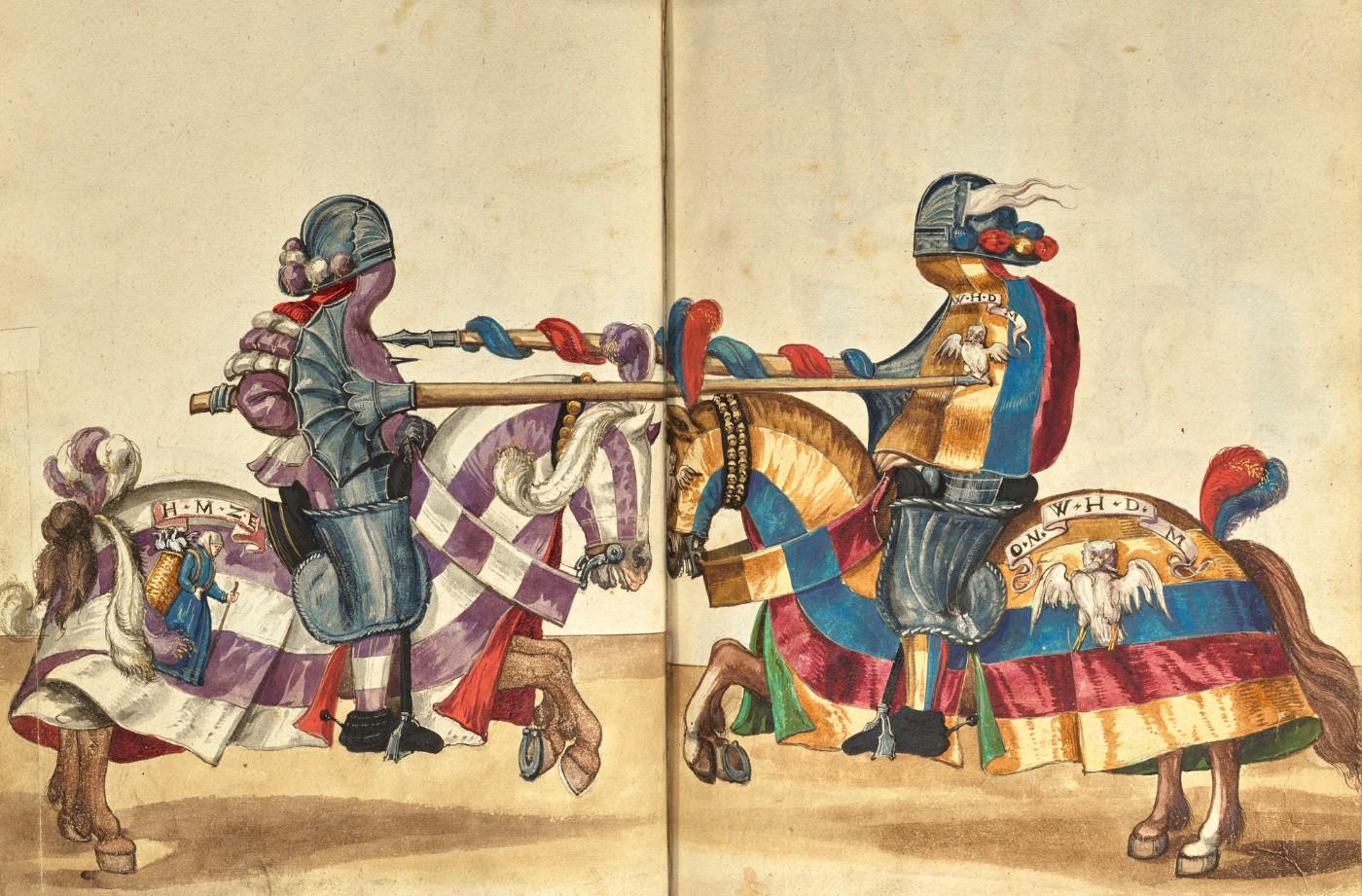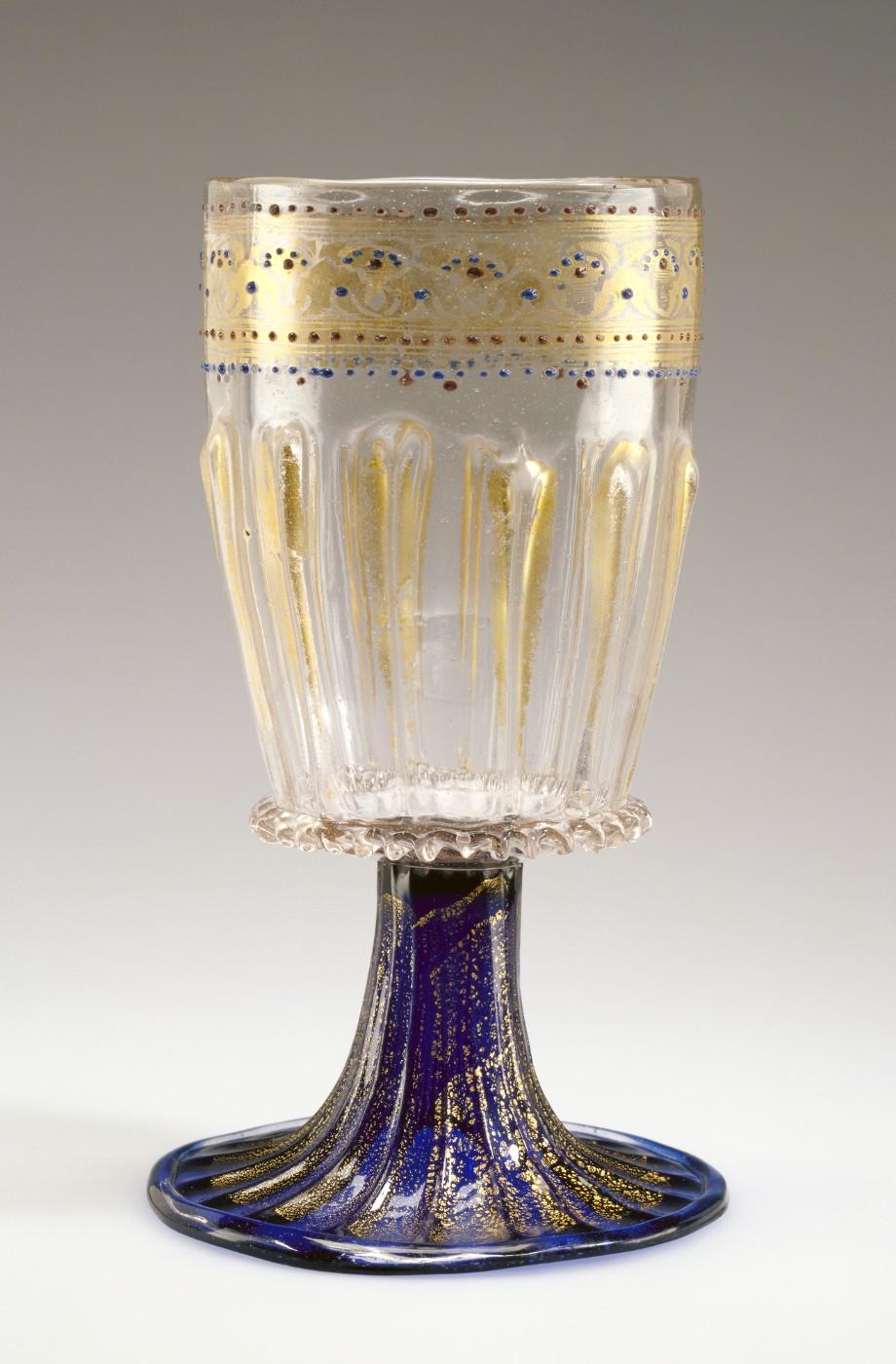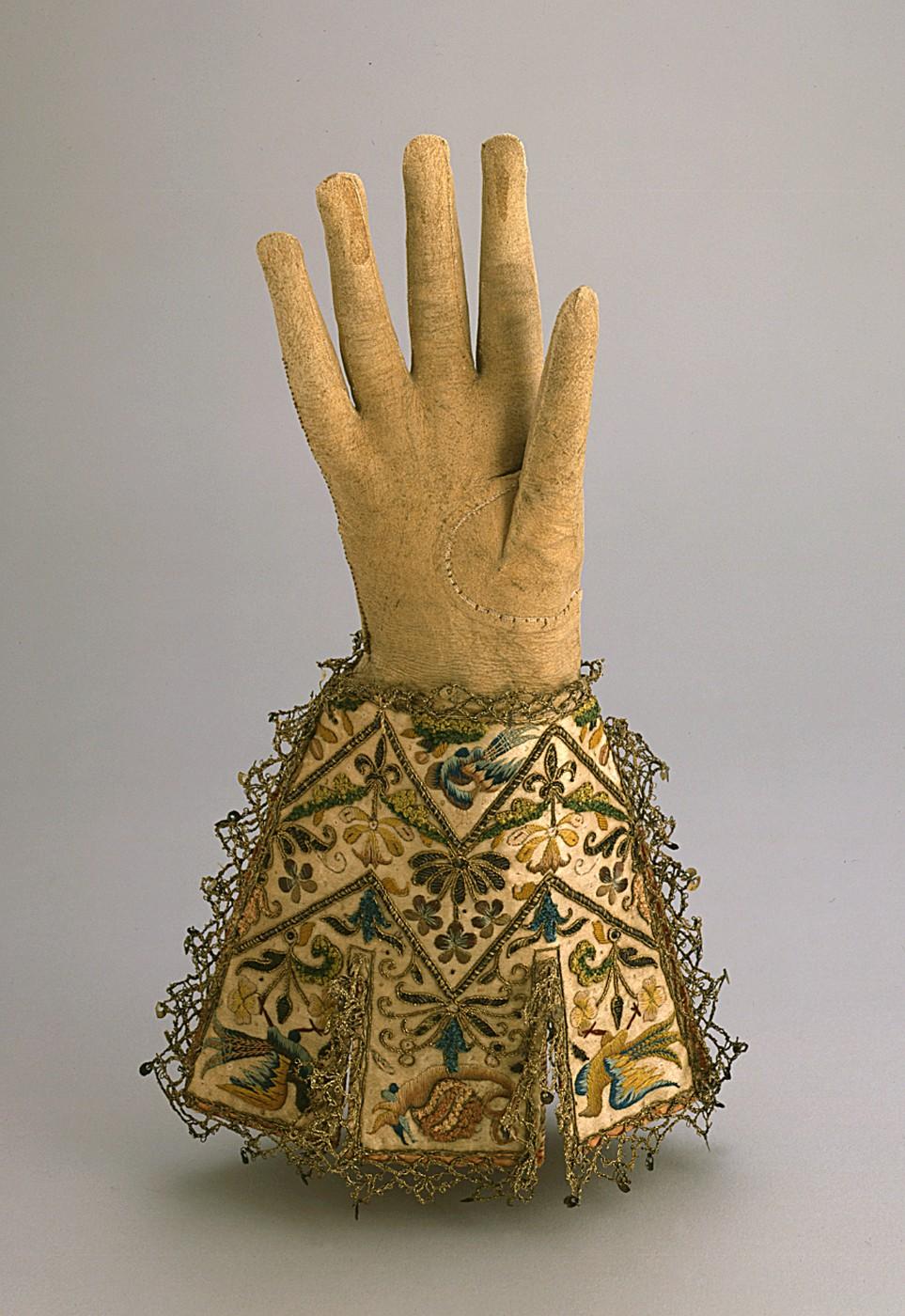“During this critical period, the court was often a place of leisure, entertainment, and display, where members of the aristocracy engaged in tournaments, hunting, feasting, and games such as chess,” explains Timothy Potts, director of the J. Paul Getty Museum. “The settings for these pursuits were designed to impress—sumptuous and spectacular displays of art and pageantry that reaffirmed their status and prestige. The manuscripts that recorded such courtly pastimes were themselves valued as luxury goods and much sought after by the nobility.”
The objects featured in All that Glitters include a selection of luxury textiles and clothing, a drawing, a hand-colored print, and glass that complement the wide variety of lavishly illuminated manuscripts that found an enthusiastic audience in the palaces and châteaux of late medieval and Renaissance Europe.
In aristocratic households all over continental Europe, even expressions of religious faith took a luxurious material form. Court artists produced small illuminated prayer books that could be worn as fashionable accessories, decorated with elegant fabrics, precious metals, and glittering jewels that adorned the residences of Europe’s elite.
The adherence to chivalric code and the way it governed both belief and behavior at the Renaissance courts was established in the Middle Ages but emerged with renewed vigor during the late medieval period. A number of dazzling and complex objects including manuscripts and stained glass explore the display of heraldry at court, where rank and systems of social hierarchy were incredibly important. Objects produced for kings, queens, and courtiers enshrined ideals of chivalry, especially in the form of jousting that continued to guide official conduct into the sixteenth century.































